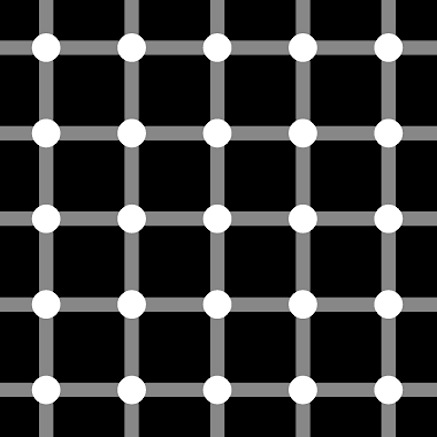

Kyoto, Japan
If you’re into visual illusion and optical phenomena, you’ll want to see the work of Akiyoshi Kitaoka, a Professor in the Department of Psychology at Ritsumeikan University, Kyoto. But be warned… his site “contains some works of ‘anomalous motion illusion,’ which might make sensitive observers dizzy or sick (e.g. epileptic seizures, which can happen if the brain can’t handle conflicting information from your two eyes). Should you feel dizzy, you had better leave immediately….” A wealth of useful information appears on or is linked to his site (granted, website design is not his strength)— here.
No, these are not moving images… your mind creates the illusion of motion.

(more visual illusions here)



Kyoto, Japan
Although we live in a WYSIWYG world in which “seeing is believing,” as a species, we’re actually quite easily fooled… which I quite enjoy. I’ve posted before (here) about the illusionary work of Akiyoshi Kitaoka, a Professor in the Department of Psychology at Ritsumeikan University, Kyoto. (Warning: his site “contains some works of ‘anomalous motion illusion,’ which might make sensitive observers dizzy or sick [e.g. epileptic seizures, which can happen if the brain can’t handle conflicting information from your two eyes]). Check out Akiyoshi’s latest visual illusions (along with lucid explanations of the related phenomena) here.
Images: the Rotating Snakes above appear to move in a circular fashion, though this is actually a still image; the Runway on the right appears to tilt from the vertical more than the one on the left, even though both are identical; similarly, the horizontally aligned rows of Chromosomes appear to tilt (though the lines are parallel). So don’t believe everything you see…


The human brain can and does (re)construct internal 3-dimensional worlds modeled on flat retinal images…
From Michael Bach’s ‘Optische Täuschung’ (Visual Illusions): “The upper contraption consists of the so-called “devil’s fork” (top right, also known as “blivet”), the “Penrose Frame” (centre) and the “hexnut” (3 of them at bottom left, an enlarged specimen at bottom right)—mind-boggling to envisage building such an object.”
M. C. Escher’s 1960 lithograph “Ascending and Descending” based on the Penrose stairs.









